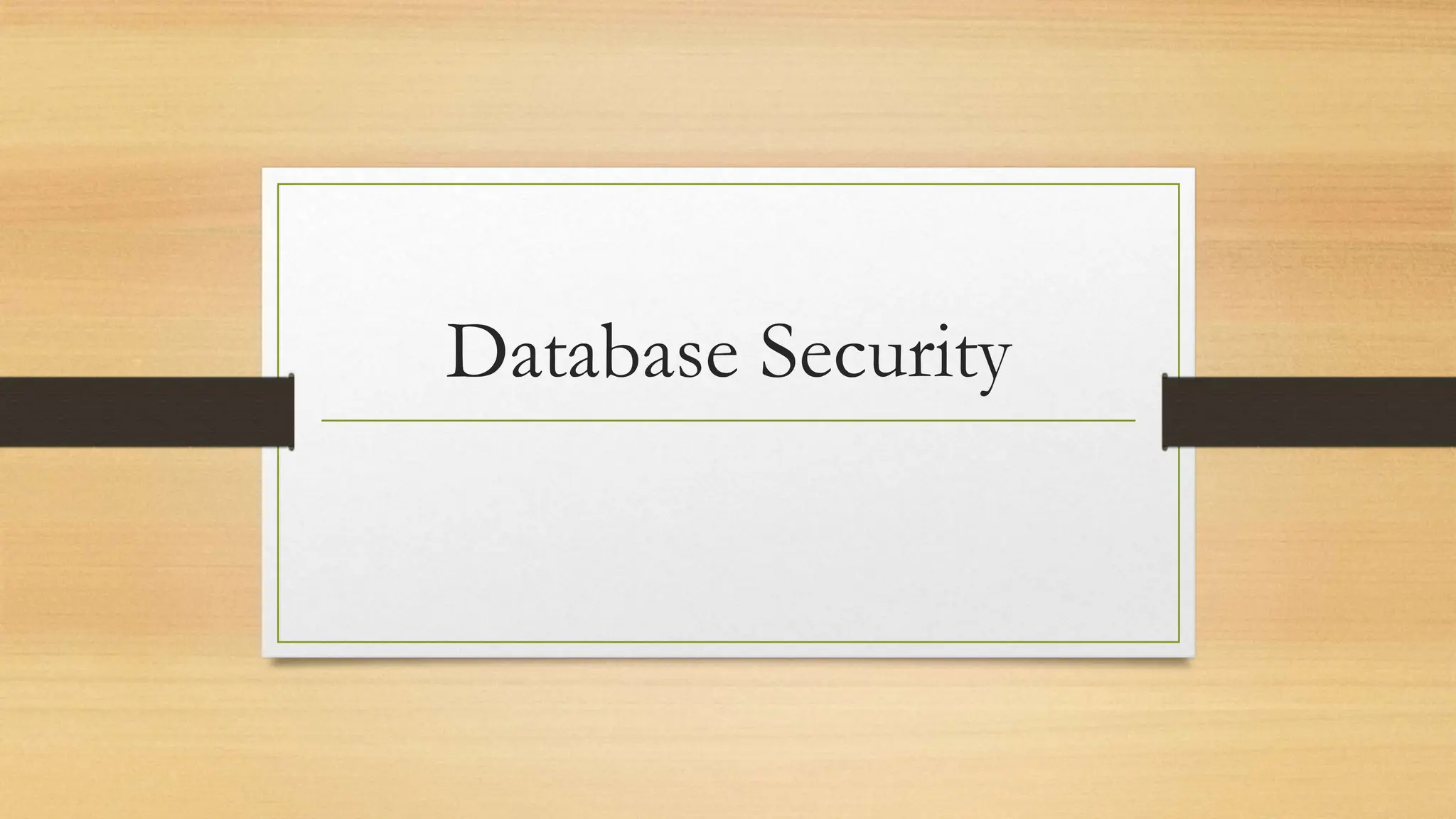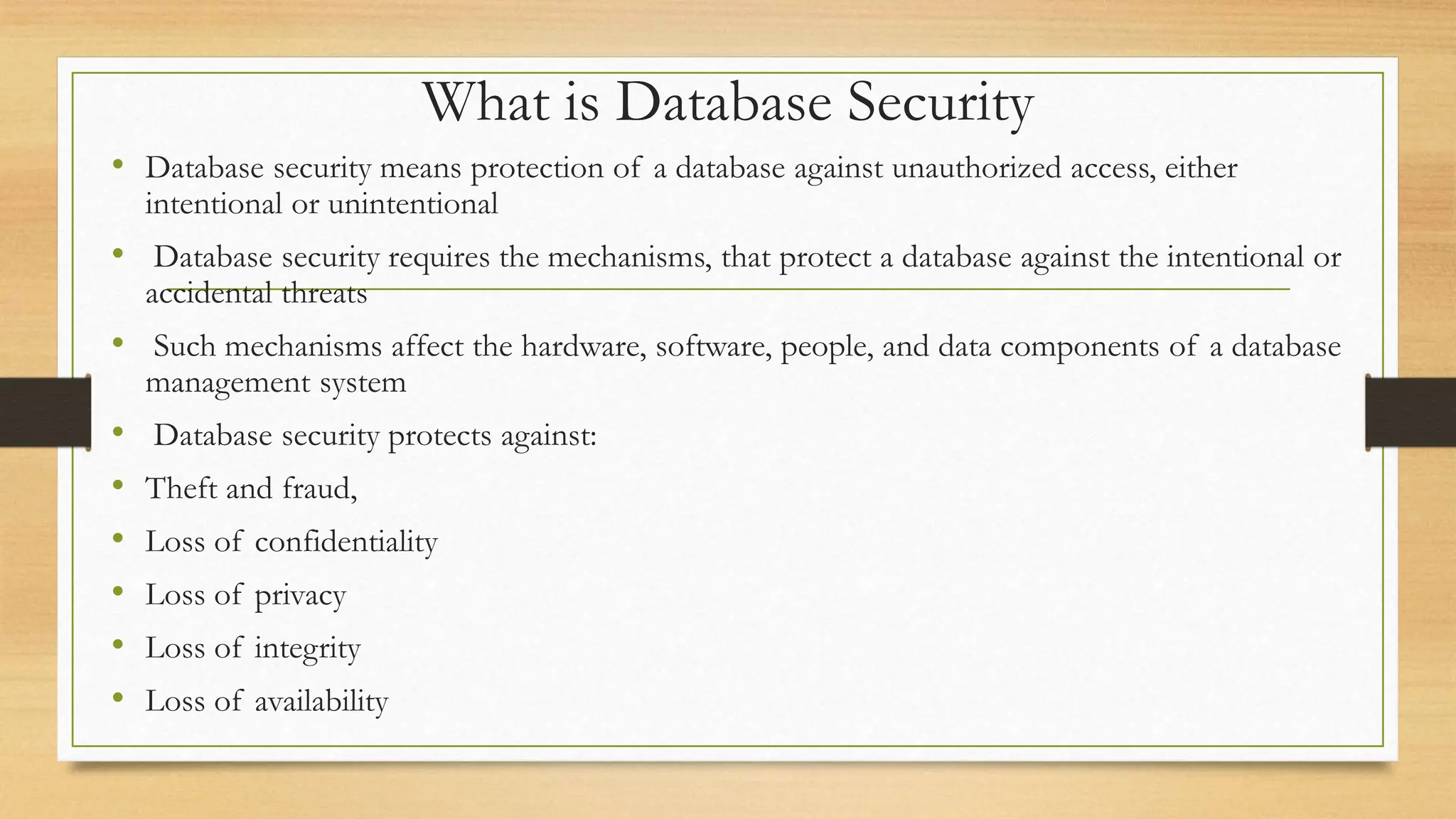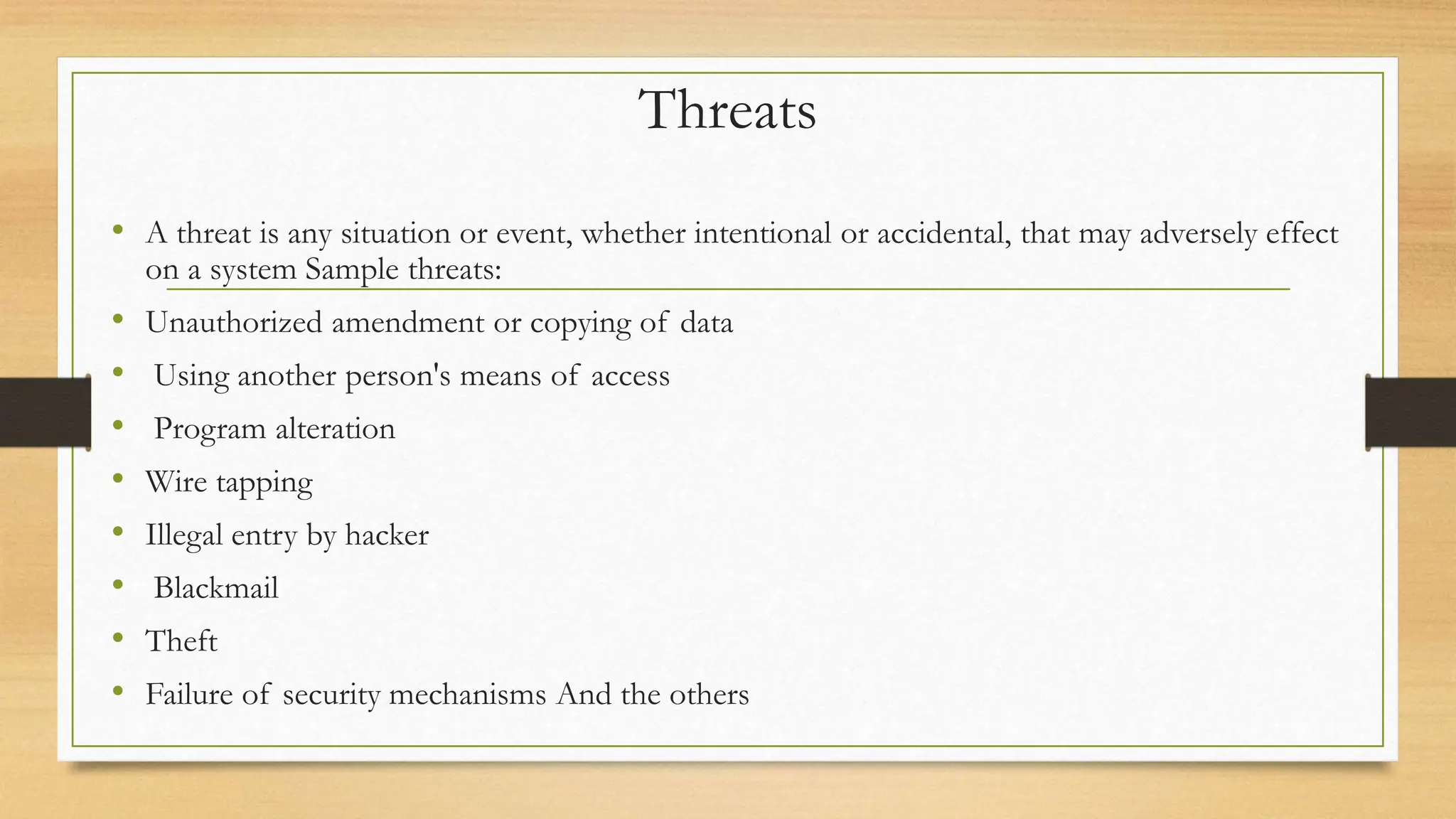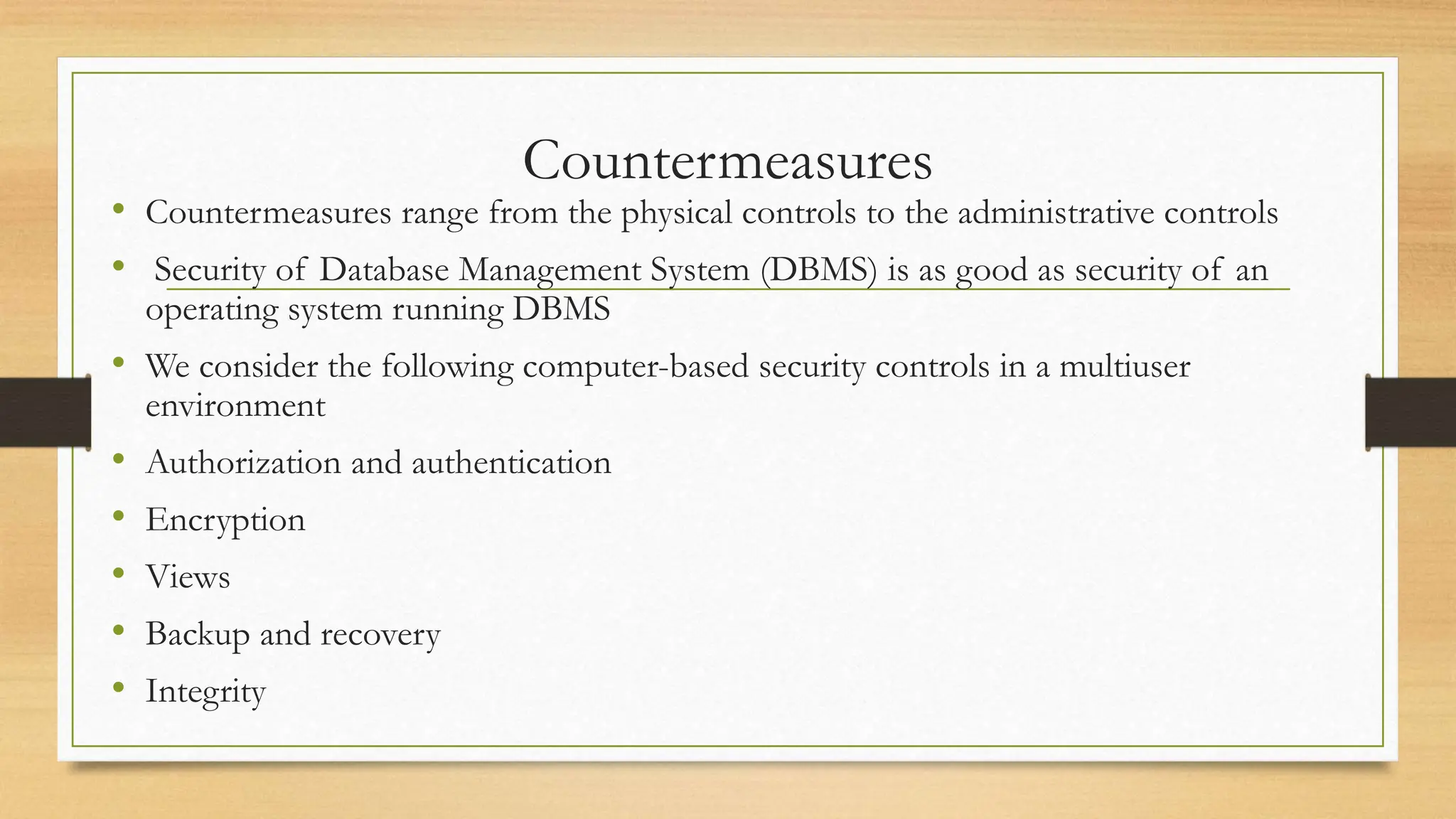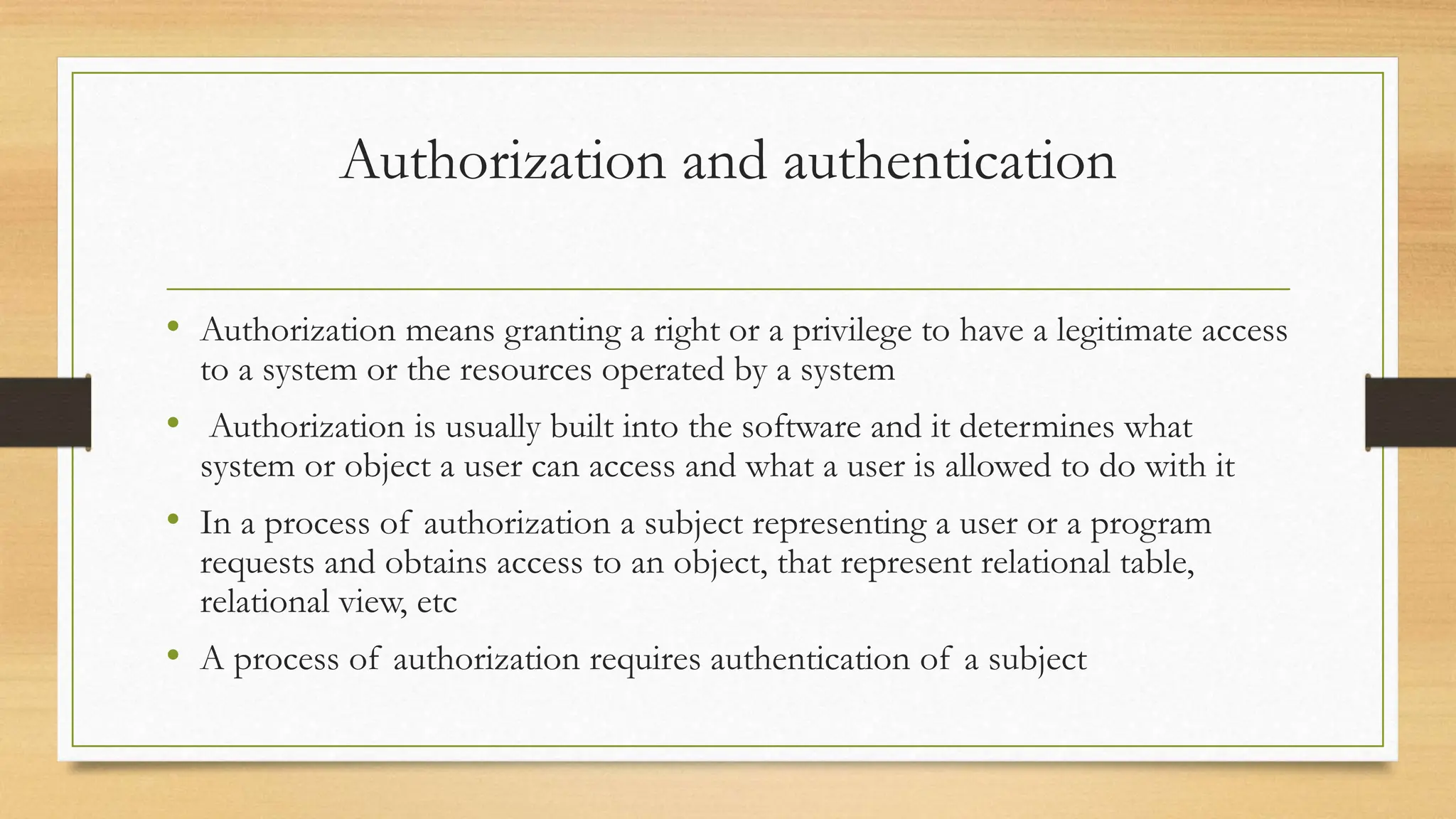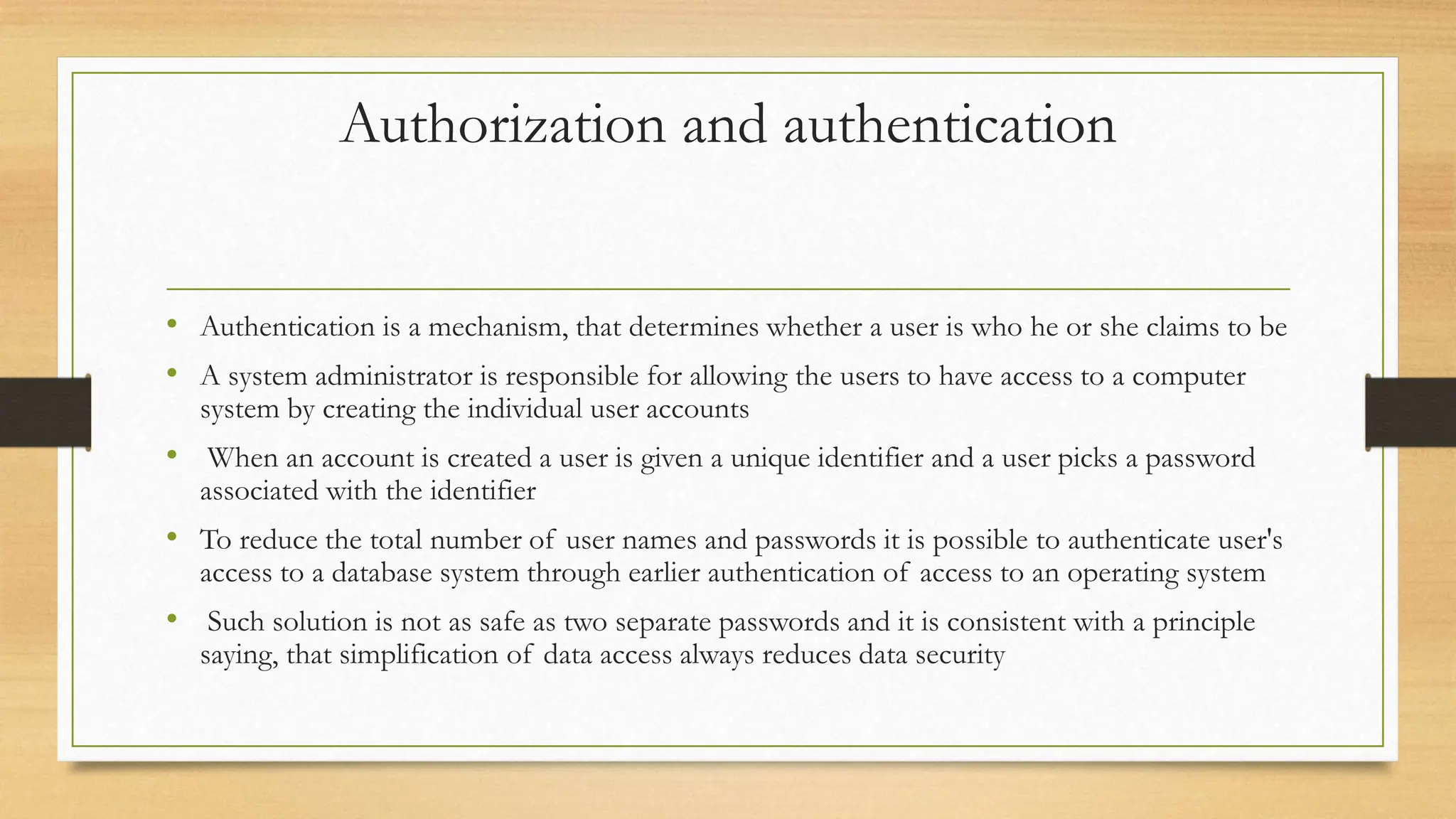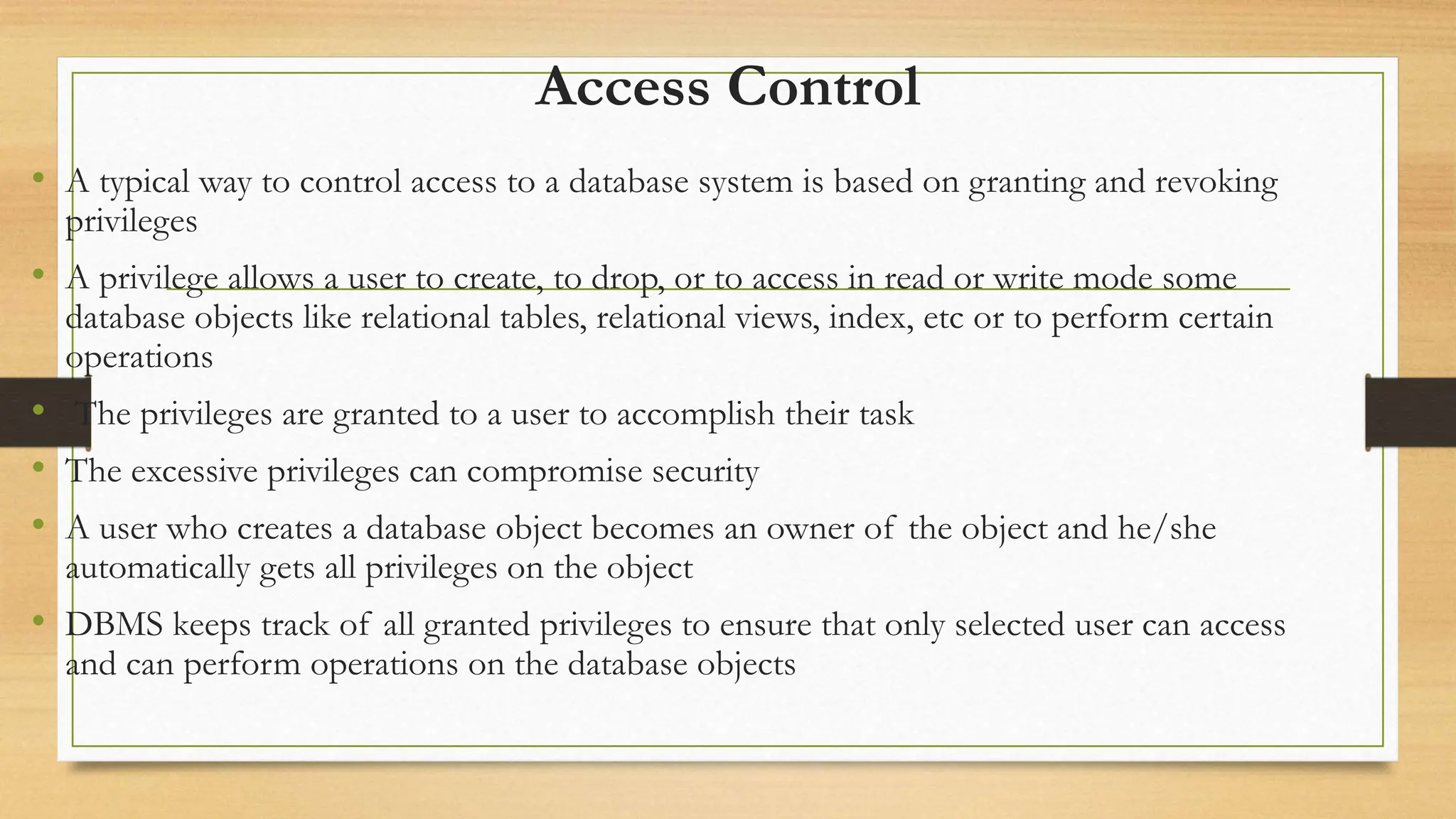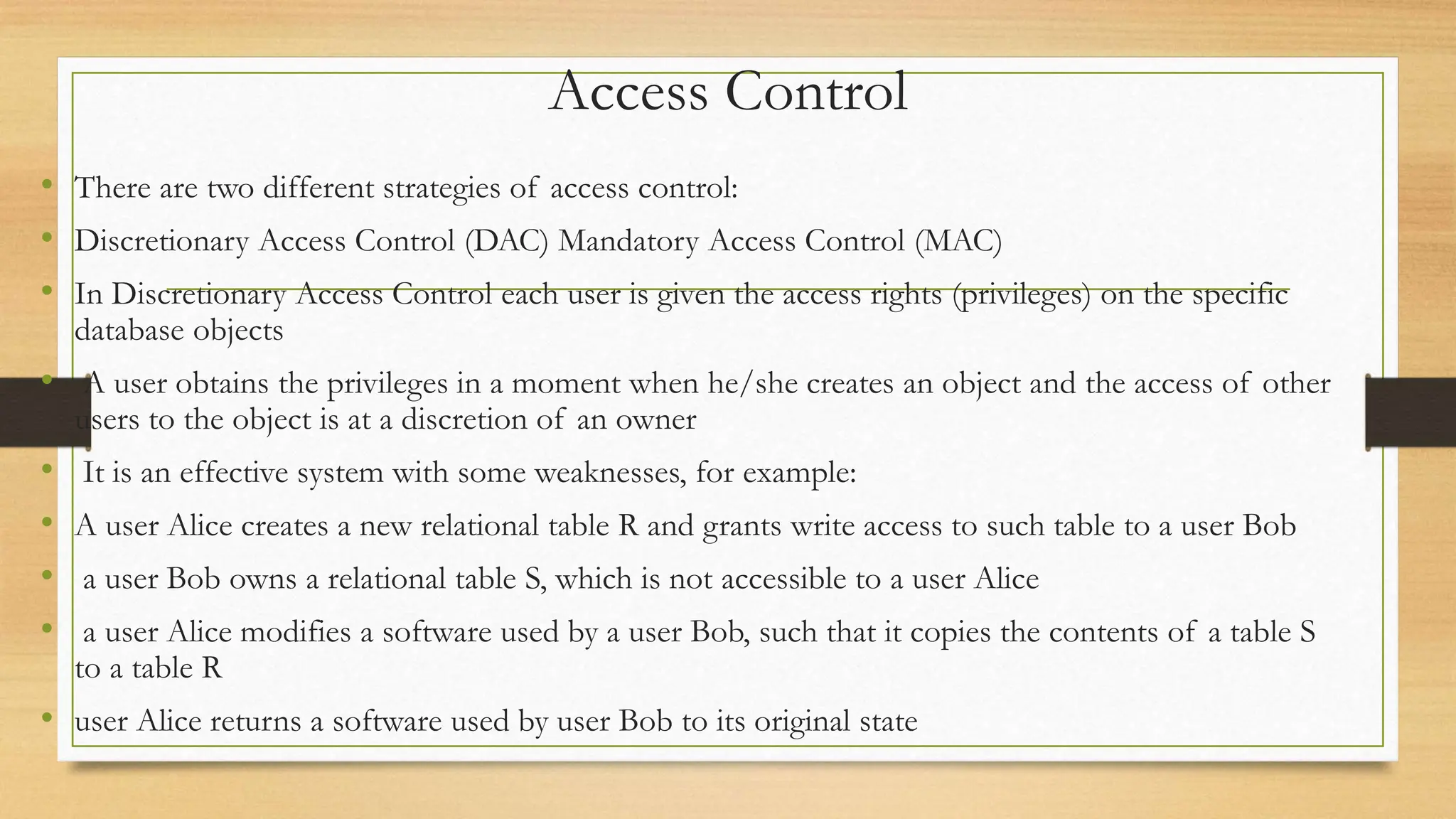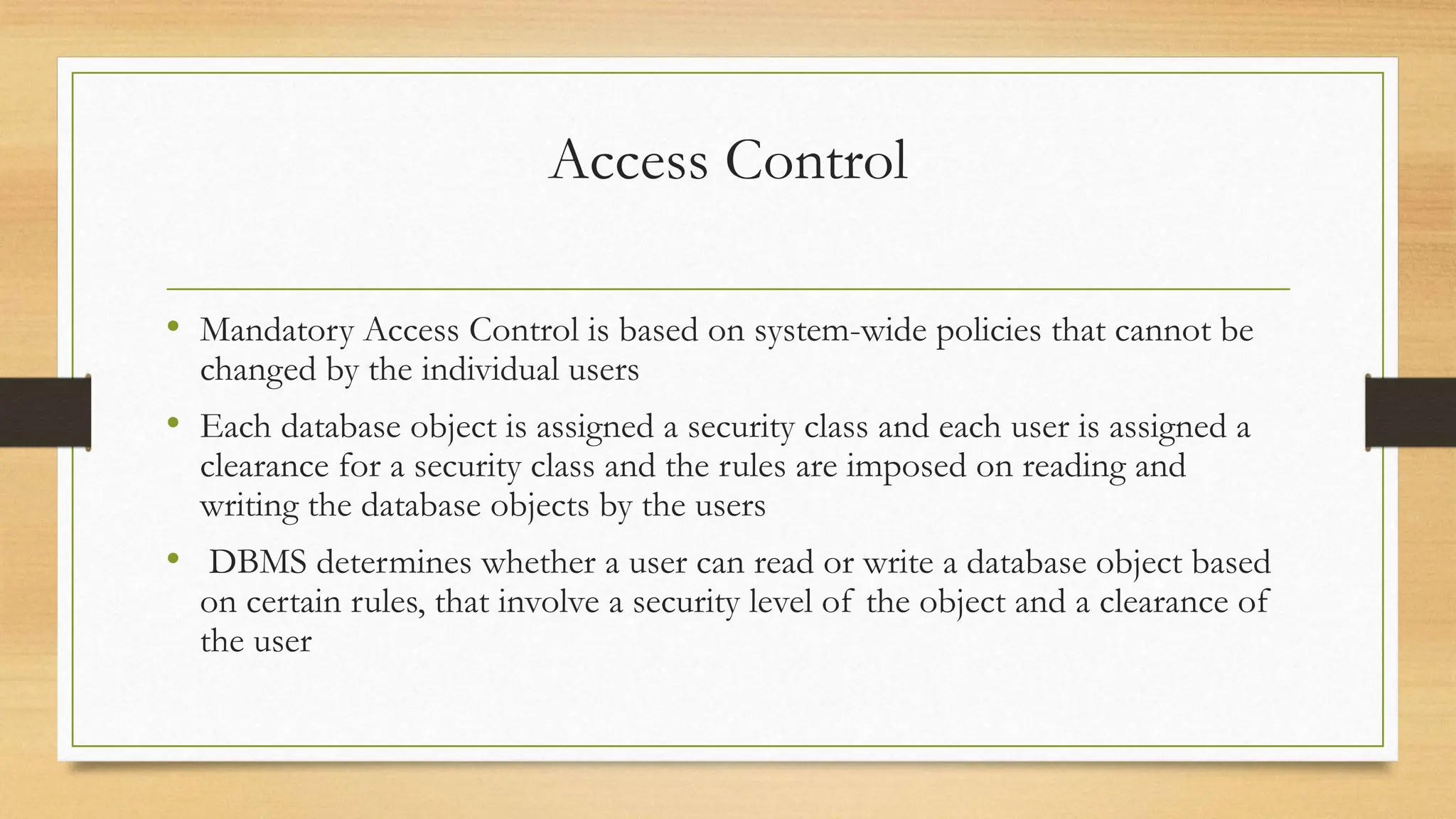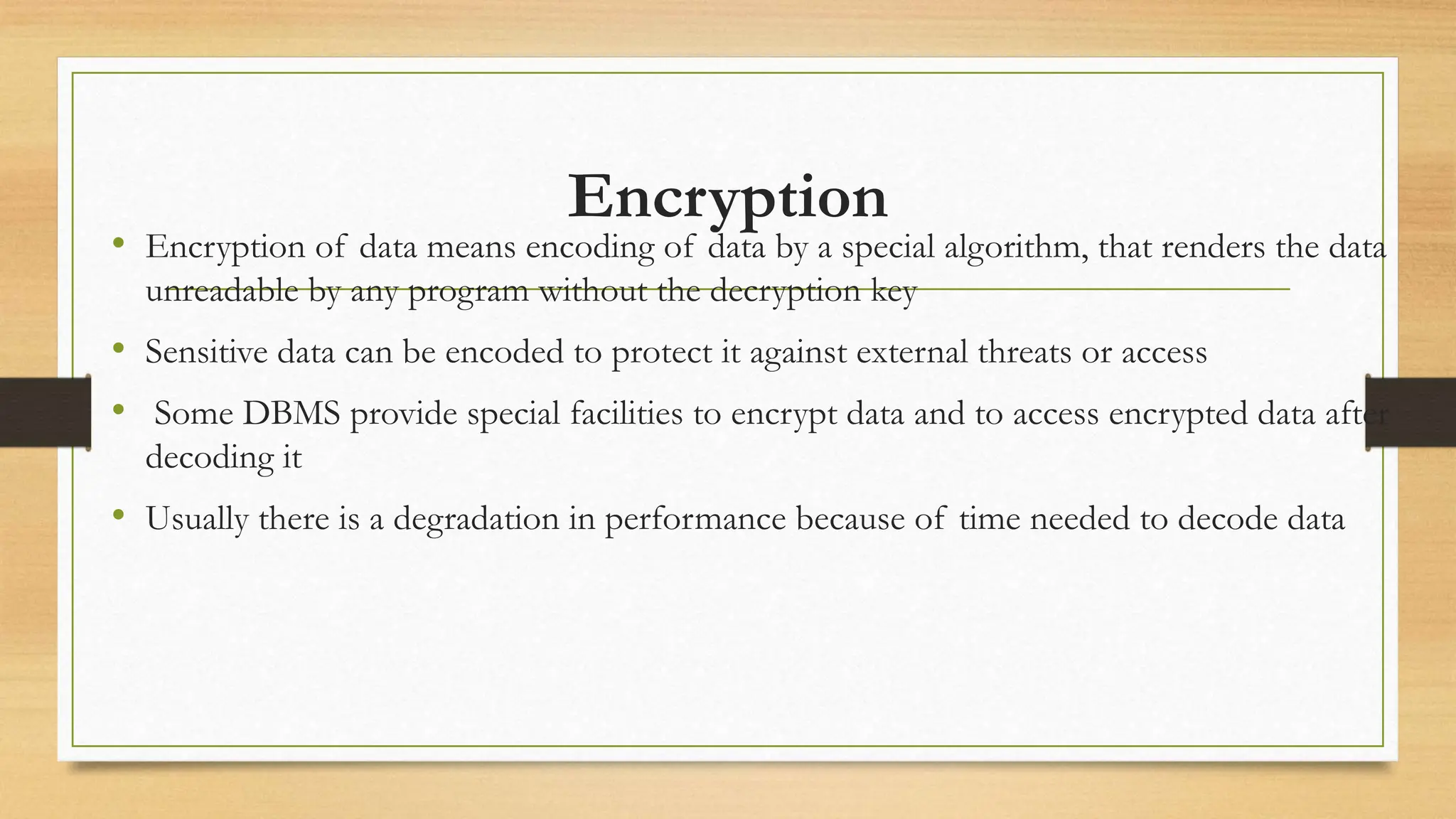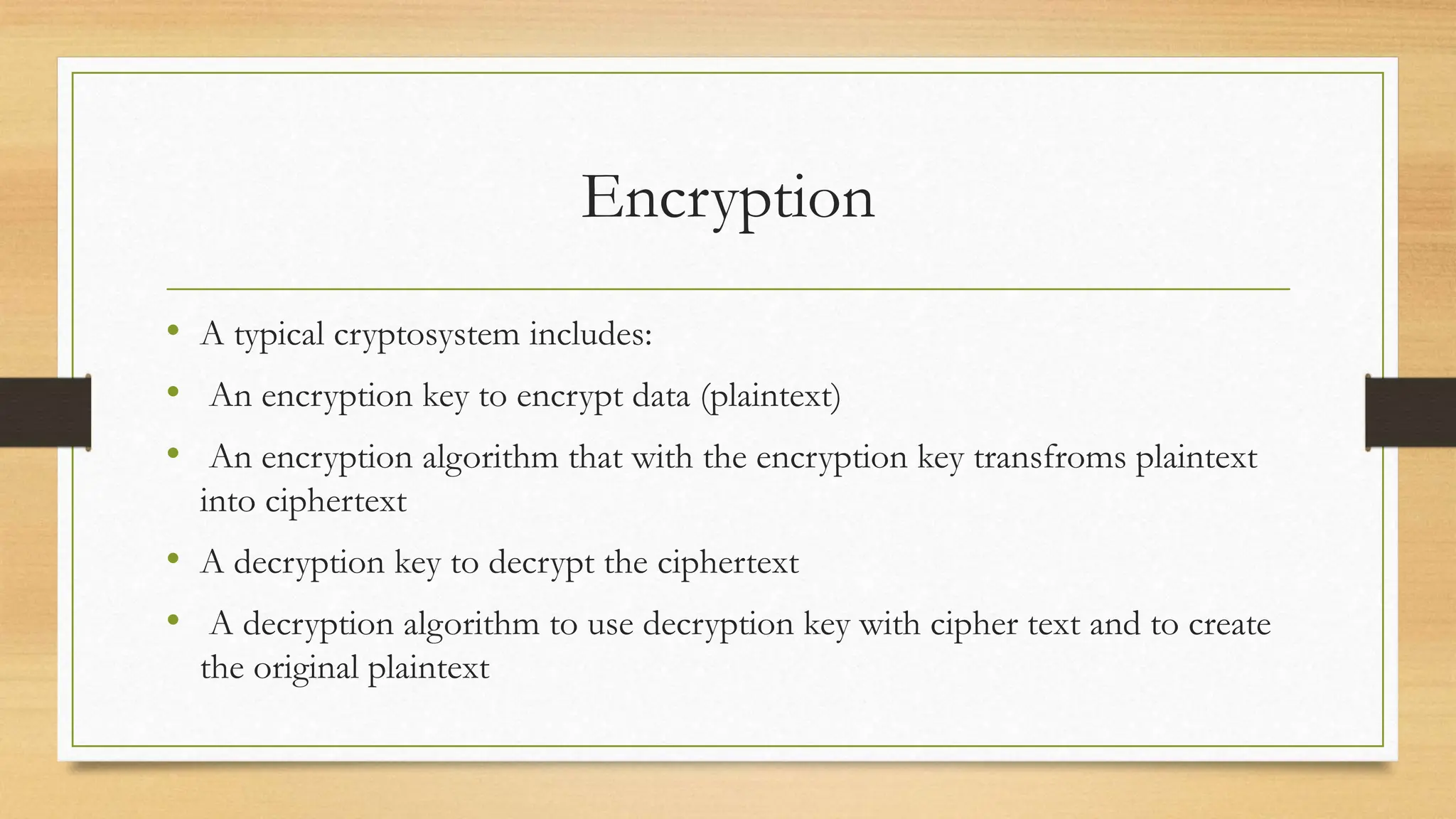Database security involves protecting a database from unauthorized access and threats through various mechanisms affecting hardware, software, and data. It includes authorization, authentication, and access control strategies to manage user privileges, as well as encryption to safeguard sensitive data. Effective database security requires a combination of physical, administrative, and technical countermeasures to mitigate risks such as theft, fraud, and loss of integrity.
